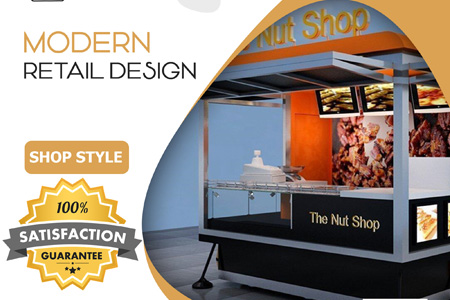Merchandising Strategy
Published: May 11, 2023
In the fiercely competitive world of retail, first impressions matter. Retail display design plays a pivotal role in capturing the attention of customers, enticing them to explore products, and ultimately, driving sales. An artful blend of creativity, psychology, and strategic planning, retail display design goes beyond arranging products on shelves—it creates an immersive and engaging shopping experience. This article delves into the significance of retail display design, its key elements, and how it influences consumer behavior.

The Power of Visual Merchandising
Visual merchandising, of which retail display design is a critical component, is the art of presenting products in a visually appealing manner to stimulate customer interest. An effective display goes beyond showcasing products; it communicates a brand's identity, story, and values.
- Creating a Lasting Impression: An eye-catching and well-executed display immediately captures the attention of passersby, encouraging them to step into the store.
- Enhancing Brand Perception: A cohesive and thoughtfully designed display reinforces a brand's image, leading to a positive perception of the brand in the customer's mind.
- Promoting Products: Strategic placement and presentation of products highlight their features, benefits, and desirability, prompting customers to consider making a purchase.
Key Elements of Retail Display Design
Understanding consumer behavior and psychology is fundamental to creating effective retail displays. Several psychological principles influence the way customers perceive and respond to displays.
- Impulse Purchases: Placing small, attractive items near the checkout counter can trigger impulse purchases, as customers are more likely to add these items to their baskets.
- Cross-Selling: Grouping complementary products together can prompt customers to consider additional purchases, increasing the average transaction value.
- Scarcity and Urgency: Limited-time offers, exclusive products, or 'while supplies last' messaging create a sense of urgency, compelling customers to act quickly.
- Emotional Appeal: Display designs that evoke positive emotions, such as joy, excitement, or nostalgia, can form a strong emotional bond between the customer and the brand.
Retail display design is a potent tool for retailers to capture the attention of their target audience, drive sales, and reinforce their brand identity. A well-crafted display takes into account visual merchandising principles, consumer psychology, and the unique story that a brand wants to convey. By combining creativity with strategic planning, retailers can transform their physical spaces into captivating shopping experiences that leave a lasting impression on customers and keep them coming back for more.
you may also like : Art of Food Kiosk Design |Interior Design for Retail Environments | Effective Exhibition Design Service Delhi | Retail Interior Design | Retail Design